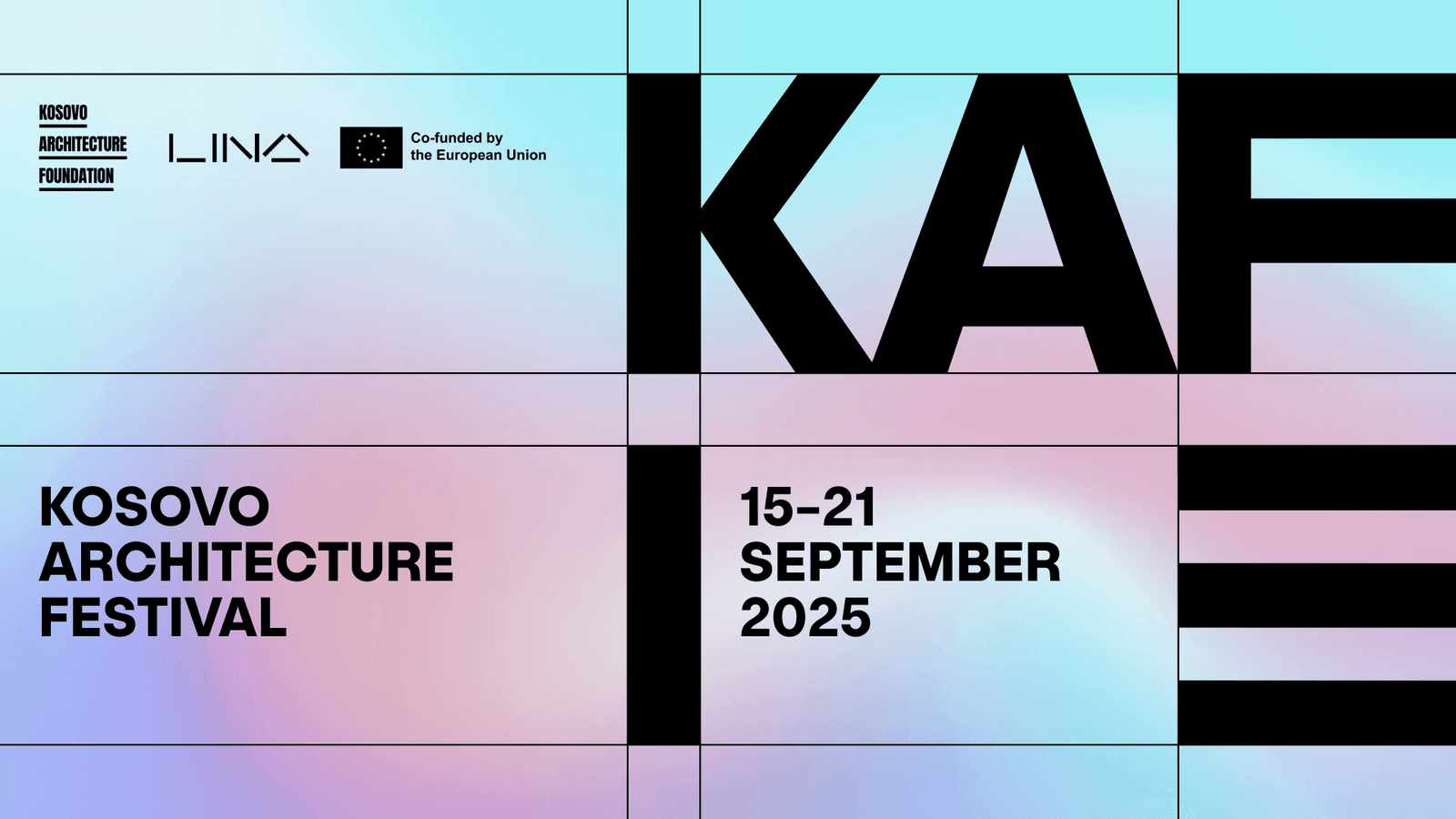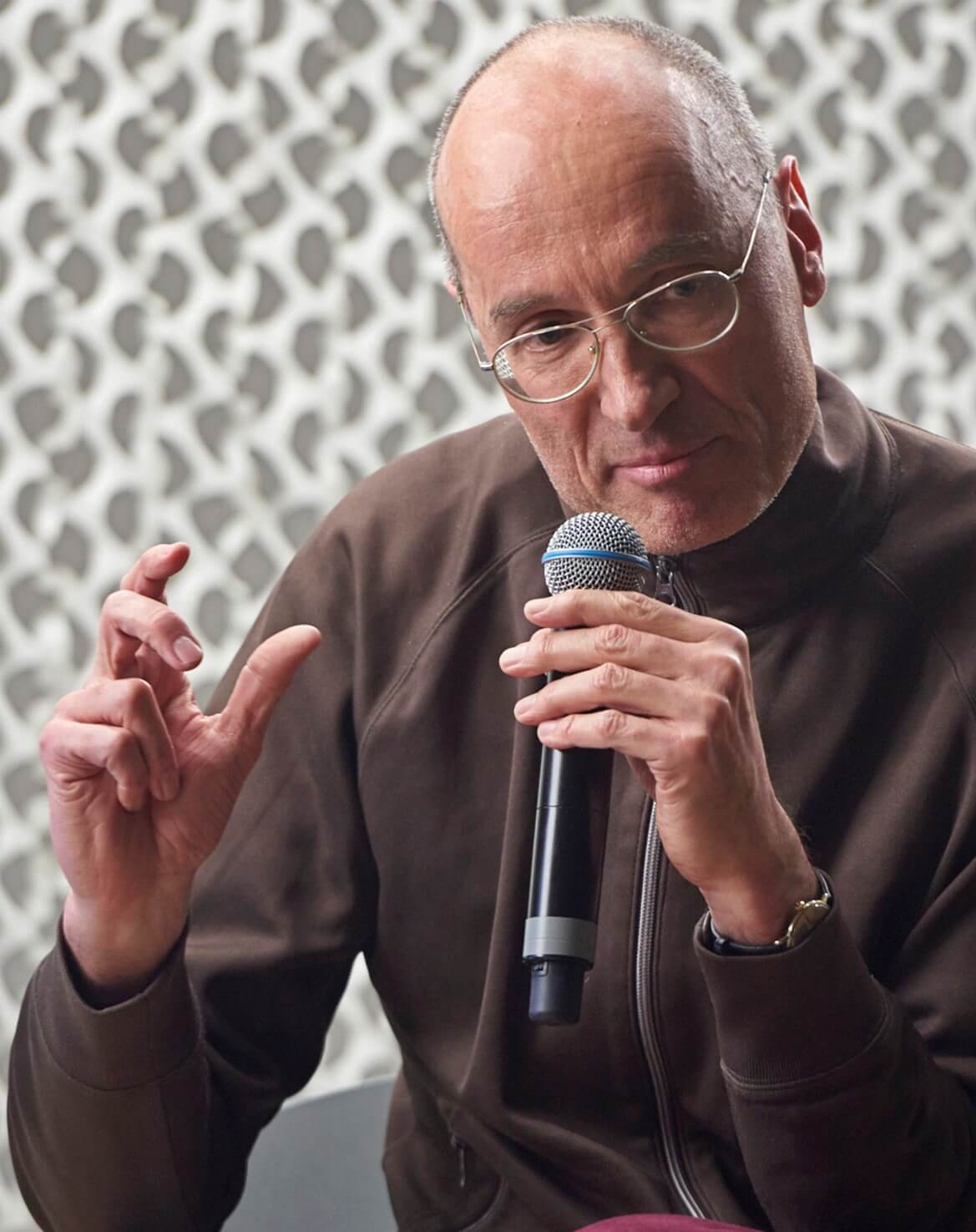
Jean-François Gauthier | KAF2025 Lecture

AL/
Jean-François (1988) është dizajner mjedisor dhe arkitekt peizazhi, i angazhuar në projekte të rigjenerimit urban. Ai ka një qasje shumështresore ndaj analizës urbane dhe punon me kompozim, ngjyra, atmosfera, ndriçim dhe detaje. Ai përqendrohet te analiza e vendit dhe përcaktimi i hapësirave specifike për ndërhyrje dizajni.
Jean-François ka përfunduar studimet në Akademinë e Arkitekturës në Amsterdam, ku ka marrë diplomën Master në arkitekturë peizazhi. Në projektin e tij të diplomimit, të titulluar “Trees First”, ai ka zhvilluar kërkime mbi sistemin dhe mundësitë e pyllit urban; duke e marrë si pikënisje pemët në qytetin e Brukselit për një dizajnim më të mirë të hapësirave publike.
Praktika e tij ndodhet në kufirin midis një fascinimi për ekosistemet e pyjeve dhe eksperimentimeve artistike. Ai përdor teknika arti me media të përziera, si kolazhe, video dhe vizatime me dorë, për të hartuar territore potenciale pyll-qytet, për të eksploruar botën nëntokësore të qyteteve tona dhe për të vizualizuar suksesionin e pyjeve në hapësirat publike.
Në vitin 2021, ai themeloi SYLVA Atelier for Landscape Architecture & Urban Forestry për ta zhvilluar më tej këtë mjeshtëri, pasi beson se sfidat mjedisore të shekullit XXI kërkojnë një gjuhë të re dizajni.
Jean-François është gjithashtu i përfshirë në arsim dhe aktualisht është koordinator i programit Pre-Master & Minor Landscape Architecture në Akademinë e Arkitekturës në Amsterdam.
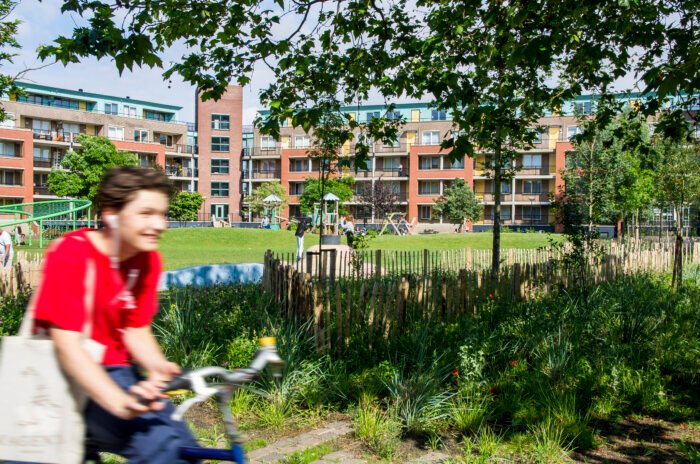
SYLVA Atelier
Një zgjidhje e qëndrueshme pyjore për mjediset urbane
Meqenëse pritet që 70% e popullsisë së botës të jetojë në qytete deri në vitin 2050 (Kombe të Bashkuara, 2018), është e nevojshme një qasje radikale ndaj peizazhit qytetar për t’u mundësuar qytetarëve aksesin në natyrë në jetën e tyre të përditshme.
Ne propozojmë përfshirjen e pemëve dhe nevojave të tyre, si mbi tokë ashtu edhe nën tokë, si një domosdoshmëri absolute që në fillim të zhvillimit të hapësirave publike.
Nesër, duhet të prezantojmë pyje në qytetet tona, në vend të mbjelljes së pemëve të vetmuara. Në këmbim do të përfitojmë shumë përfitime, si përmirësimi i shëndetit publik dhe adaptimi ndaj ndryshimeve klimatike.
Sfidat globale të urbanizimit kërkojnë një qëndrim të ri ndaj pemëve dhe një mjeshtëri të re që ne zhvillojmë në SYLVA, duke krijuar një urë midis arkitekturës së peizazhit dhe pylltarisë urbane.
Si praktikë dizajni, ne synojmë të organizojmë një kolektiv fleksibël pjesëmarrësish për të krijuar zgjidhje të personalizuara për çdo projekt.
Rreth ligjëratës:
Pemët së pari: hapësirat publike të qytetit-pyll
Si të zhvillojmë tipologji të reja urbane ku pemët luajnë një rol qendror, duke kombinuar dizajnin, krijimin e vendit, pjesëmarrjen dhe sigurimin e kushteve të përshtatshme për rritjen e pemëve që do të plaken dhe do t’u sjellin dobi të gjithëve?
Duke rritur sipërfaqen e kurorës së pemëve, do të marrim përfitime të mëdha në këmbim, si përmirësimin e shëndetit publik dhe përshtatjen ndaj ndryshimeve klimatike. Tre tema kryesore paraqiten si një kornizë e mundshme ekologjike për dizajnin e pyllit urban: një territor, një komunitet dhe një peizazh kohe.
Le ta shohim qytetin si një territor të mundshëm pyjor.
Në natyrë, pyjet organizohen përmes burimeve, korridoreve dhe gurëve kalimtarë, duke formuar një rrjet ekologjik. Në kushte urbane, natyra është e fragmentuar dhe e shqetësuar rëndë nga aktivitetet njerëzore, gjë që sjell humbje të biodiversitetit. Megjithatë, duke e parë qytetin si një rrjet ekologjik pyjor të mundshëm, parqet mund të shihen si burime biodiversiteti; rrugët si korridore ekologjike dhe sheshet si habitate kalimtare.
Le të shpikim tipologji të reja hapësirash publike rreth komuniteteve të pemëve.
Në metodologjinë “Trees First”, përshtatja klimatike e mjedisit urban projektohet nga habitatet e pemëve. Shkalla e ndriçimit nga dielli, hija, lagështia e tokës dhe tipi i tokës përcaktojnë se cili habitat natyror dhe cila komunitet bimësie është i përshtatshëm për një vend specifik urban.
Le të përcaktojmë strategji peizazhore për të lejuar suksesionin pyjor në qytet.
Kur i jepen kohë dhe hapësirë, një pyll rritet i fortë dhe vetëmbahet. Duke përcaktuar strategji të veçanta, suksesioni ekologjik mund të ndodhë edhe në hapësirat tona urbane të kufizuara. Qytetarët do të lidhen sërish me ritmin e ngadaltë të rritjes së pemëve, duke forcuar ndjenjën e përkatësisë rreth mirëmbajtjes dhe kujdesit për pyllin urban.
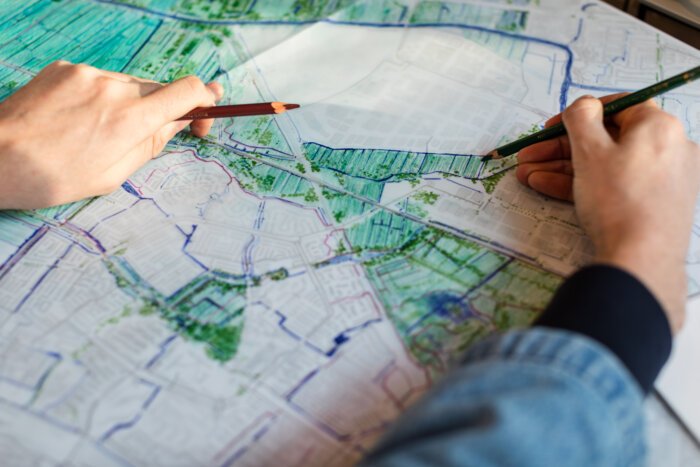
EN/
Jean-François (1988) is an environmental designer and landscape architect, involved in urban regeneration projects. He has a multi-layered approach towards urban analysis and works with composition, colours, atmospheres, lighting and details. He focuses on site-analysis and defining specific places for design interventions.
Jean-François has graduated from the Amsterdam Academy of Architecture with a Master’s degree in landscape architecture. In his graduation project titled ‘Trees First’, he has conducted research into the system and possibilities of the urban forest; focusing on trees in the city of Brussels as a starting point for better design of public spaces.
His practice lies at the edge between a fascination for forest ecology systems and artistic experimentations.
He uses mixed media art techniques such as collages, videos and hand drawings to map potential forest-city territories, to explore the underground world of our cities and to visualize forest succession in public spaces.
In 2021, he founded SYLVA Atelier for Landscape Architecture & Urban Forestry to develop further this craftsmanship, as he believes that the environmental challenges of the 21st century ask for a new design language.
Jean-François is also involved in education and is currently coordinator for the Pre-Master & Minor Landscape Architecture at Academy of Architecture in Amsterdam.
SYLVA Atelie
A grounded forest solution for urban environments
As 70% of the world population is expected to live in cities by 2050 (United Nations, 2018), a radical approach towards cityscape is needed to allow citizens to access nature in their daily lives.
We propose to include trees and their needs, both above and below ground, as an absolute necessity at the beginning of the development of public spaces.
Tomorrow, we must introduce forests in our cities rather than planting solitary trees. We will receive great benefits in return such as improved public health and climate change adaptation.
Global urbanization challenges ask for a new attitude towards trees and a new craftsmanship that we develop at SYLVA, creating a bridge between landscape architecture and urban forestry.
As a design practice we want to organise a flexible collective of participants in order to make tailor fit solutions for every project.
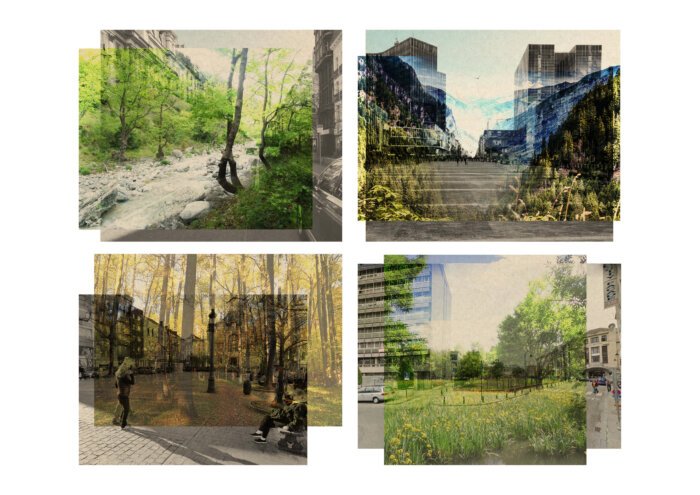
About the Lecture
Trees first: the public spaces of the forest city
How to develop new urban typologies in which trees play a central role, combining design, place making, participation and the implementation of good growing conditions for trees that will grow old and benefit all?
By increasing the tree canopy cover, we will receive great benefits in return such as improved public health and climate change adaptation. Three main themes are introduced as a possible ecological framework for urban forest design: a territory, a community, and a time landscape.
Let’s look at the city as a potential forest territory.
In a natural setting, forests are organized through sources, corridors, and stepping stones, forming an ecological network. In urban conditions, nature is fragmented and highly disturbed by human activities which results in loss of biodiversity. However, looking at the city as a potential forest ecological network, parks could be seen as biodiversity sources; streets could be seen as ecological corridors and squares could be seen as stepping stone habitats.
Let’s invent new public space typologies around tree communities.
In the ‘Trees First’ methodology, climate adaptation of the urban environment is designed from the habitat of trees. The degree of sunlight, shade, soil moisture characteristics and soil type determine which natural habitat and its corresponding planting community are applicable for a specific urban location.
Let’s define landscape strategies to allow forest successions to happen in the city.
When given time and space, a forest will grow strong and will self-sustain itself. By defining specific strategies, ecological succession can happen within our various and constrained urban spaces. Citizens will then connect back with the slow-paced growth of trees, enhancing a sense of belonging around the maintenance and care of the urban forest.
